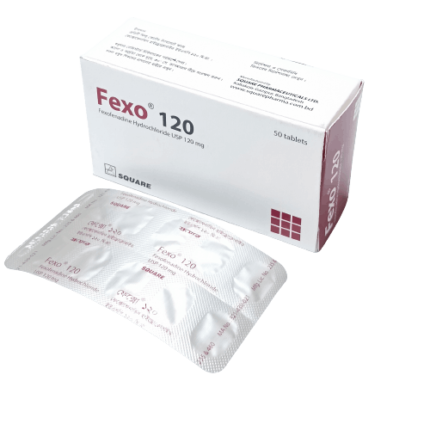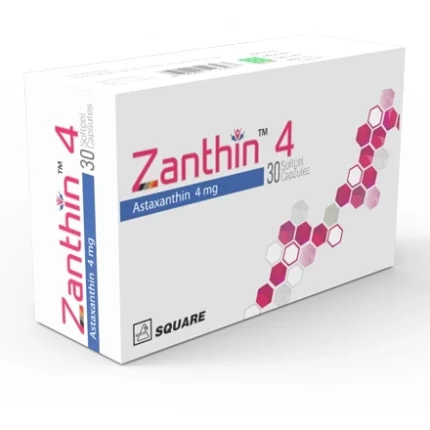

Tridosil 30ml Syrup
130.00৳ Bottle (30ml)
- Tridosil is an antibiotic indicated for a range of infections, including respiratory, skin, and sexually transmitted diseases.
- It contains azithromycin, which effectively binds to the 50S ribosomal subunit of bacteria, inhibiting protein synthesis.
- Available in oral and intravenous forms, it offers convenient dosing with a prolonged half-life for sustained efficacy.
- Side effects are generally mild, with gastrointestinal disturbances being the most common, and it is classified as safe for use during pregnancy with caution.
 Brand
Brand
|
Incepta Pharmaceuticals Ltd |
|---|---|
 Generics
Generics
|
Azithromycin Dihydrate |
 Type
Type
|
Powder for Suspension |
Indications
Tridosil is prescribed for various infections caused by susceptible pathogens. This includes lower respiratory tract infections like bronchitis and pneumonia, upper respiratory tract infections such as sinusitis and pharyngitis/tonsillitis, otitis media, and skin and soft tissue infections. Additionally, Tridosil is effective in treating sexually transmitted infections, specifically non-gonococcal urethritis and cervicitis caused by Chlamydia trachomatis in both men and women.
Always use this medication as directed by a registered healthcare professional.
Pharmacology
Azithromycin is designed to withstand acidic environments, allowing for effective oral administration without the need for gastric protection. It is rapidly absorbed, with optimal absorption occurring on an empty stomach. Peak plasma concentration in adults occurs within 2.1 to 3.2 hours after oral intake. Due to its accumulation in phagocytes, azithromycin is effectively delivered to infection sites. During phagocytosis, significant quantities of azithromycin are released, with tissue concentrations potentially exceeding plasma levels by over 50 times, a phenomenon attributed to ion trapping and high lipid solubility.
Azithromycin’s extended half-life permits the administration of a single large dose, sustaining bacteriostatic levels within infected tissues for several days. After a single 500 mg dose, azithromycin plasma levels decline in a polyphasic manner, with a mean apparent plasma clearance of 630 mL/min and a terminal elimination half-life of 68 hours. This prolonged half-life is likely due to extensive tissue uptake and gradual drug release. The primary route of elimination is biliary excretion, with around 6% of the total dose appearing unchanged in urine over the course of a week.
Microbiology
Azithromycin exerts its antibacterial effects by binding to the 50S ribosomal subunit of susceptible microorganisms, disrupting protein synthesis without impacting nucleic acid synthesis. The drug has demonstrated efficacy against a range of microorganisms, including:
- Aerobic and facultative gram-positive organisms: Staphylococcus aureus, Streptococcus agalactiae, Streptococcus pneumoniae, Streptococcus pyogenes
- Aerobic and facultative gram-negative organisms: Haemophilus ducreyi, Haemophilus influenzae, Moraxella catarrhalis, Neisseria gonorrhoeae
- Other pathogens: Chlamydia pneumoniae, Chlamydia trachomatis, Mycoplasma pneumoniae
Additionally, it is effective against other aerobic and anaerobic bacteria, including Bordetella pertussis and Legionella pneumophila.
Dosage
Oral Administration:
- Adults: 500 mg once daily for 3 days or a single 500 mg dose on day 1, followed by 250 mg once daily for days 2-5. For treating sexually transmitted infections caused by Chlamydia trachomatis, the recommended dosage is 1 gm as a single dose or 500 mg on day 1, followed by 250 mg once daily for the next 2 days.
- Children:
- For children over 6 months: 10 mg/kg body weight once daily for 3 days.
- For those weighing 15-25 kg: 200 mg (1 teaspoonful) for 3 days.
- For those weighing 26-35 kg: 300 mg (1½ teaspoonfuls) for 3 days.
- For those weighing 36-45 kg: 400 mg (2 teaspoonfuls) for 3 days.
- In cases of typhoid fever, 500 mg (2½ teaspoonfuls) once daily for 7-10 days.
Azithromycin Injection (IV Infusion only):
For adult patients with community-acquired pneumonia, the recommended dose is 500 mg as a single daily intravenous dose for at least two days. This can be followed by oral azithromycin, 500 mg daily, to complete a 7 to 10-day treatment regimen. The decision to switch to oral therapy should be based on the physician’s clinical assessment.
For pelvic inflammatory disease, administer 500 mg once daily via IV for one or two days, followed by 250 mg orally daily for 7 days. If anaerobic bacteria are suspected, a combination with an appropriate antimicrobial agent is recommended.
Safety and efficacy for azithromycin injection in children or adolescents under 16 years have not been established.
Always use this medication as directed by a registered healthcare professional.
Administration
Reconstitution of Suspension:
- Shake the bottle vigorously to loosen the powder.
- Add boiled and cooled water up to the designated water mark on the bottle.
- Shake thoroughly until the powder is completely dissolved.
Note: Azithromycin should be taken at least 1 hour before or 2 hours after meals.
Always use this medication as directed by a registered healthcare professional.
Interaction
- Antacids: If taking azithromycin with antacids, consume azithromycin at least 1 hour before or 2 hours after taking the antacid.
- Cyclosporin: Caution is advised when co-administering azithromycin and cyclosporin due to potential interactions. Monitor cyclosporin levels closely.
- Digoxin: Azithromycin may affect digoxin metabolism, so monitor digoxin levels when used concurrently.
- Ergot Derivatives: Co-administration of azithromycin and ergot derivatives is not recommended due to the risk of ergotism.
- Warfarin: Azithromycin does not significantly alter the effects of warfarin, but prothrombin time should still be monitored routinely.
Contraindications
Azithromycin is contraindicated in patients with a known hypersensitivity to azithromycin or other macrolide antibiotics. Co-administration with ergot derivatives is prohibited. Use with caution in patients with hepatic disease.
Side Effects
Tridosil is generally well-tolerated, with a low incidence of side effects, primarily mild to moderate in nature. Gastrointestinal disturbances such as nausea, abdominal discomfort, vomiting, flatulence, diarrhea, and loose stools are the most commonly reported side effects. Allergic reactions, including rash and photosensitivity, have been documented, alongside rare but serious hypersensitivity reactions. Elevations in liver transaminases and occasional transient reductions in neutrophil counts have been observed. In studies using higher doses, some patients experienced reversible hearing impairment.
Pregnancy & Lactation
Azithromycin falls under Pregnancy Category B. Animal studies have indicated no harm to the fetus, but there are no adequate studies in pregnant women. It should only be used during pregnancy when necessary. The excretion of azithromycin in breast milk is unknown, so caution is advised when administering to nursing mothers.
Precautions & Warnings
As with other macrolides, rare but serious allergic reactions such as angioedema and anaphylaxis may occur. Some cases of azithromycin-related allergic reactions have required extended observation and treatment.
Use in Special Populations
- Renal Impairment: No dose adjustment is required for mild renal impairment, but caution is advised for those with more severe impairment due to limited data.
- Hepatic Impairment: Azithromycin should not be used in patients with significant hepatic disease.
- Driving and Machinery: No evidence suggests that azithromycin impairs the ability to drive or operate machinery.
Overdose Effects
Data on azithromycin overdose is limited, but symptoms may include hearing loss, severe nausea, vomiting, and diarrhea. Gastric lavage and supportive care are recommended in such cases.
Storage Conditions
Store Tridosil in a dry place, protected from light and heat. Keep out of reach of children.











Reviews
There are no reviews yet.